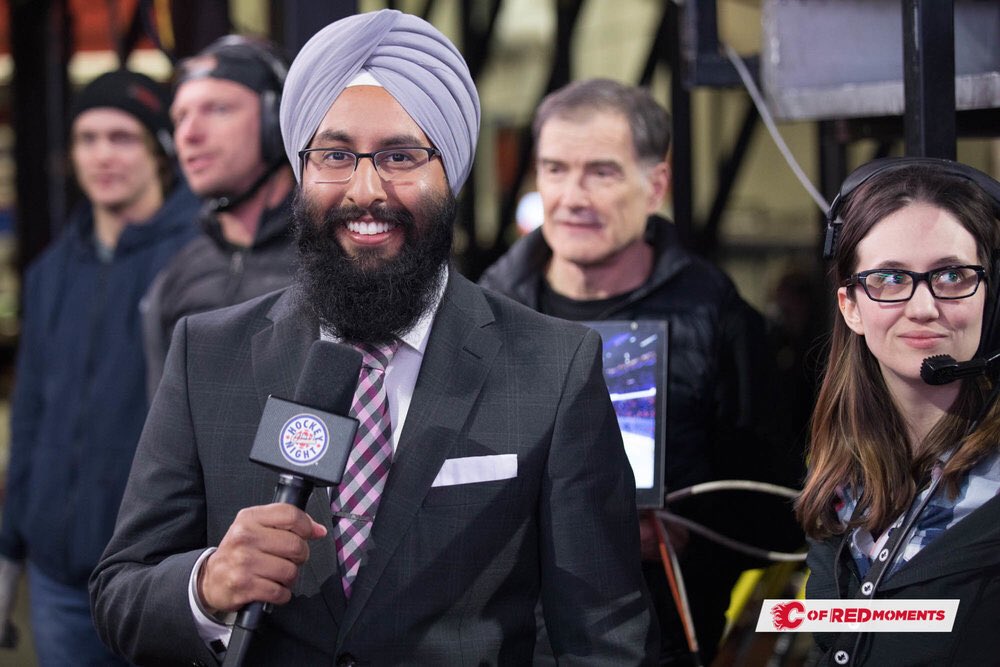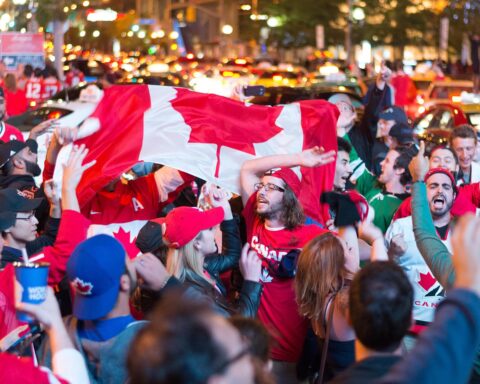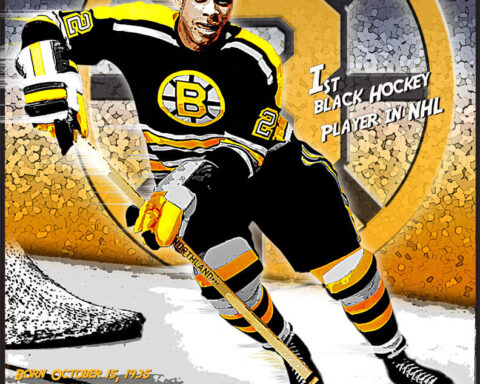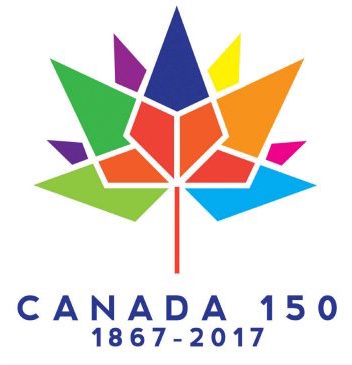There has been a lot of discussion about discrimination and racism in hockey, the national winter sport of Canada. The COVID-19 pandemic may have additionally dulled the enthusiasm among sport lovers, but one voice that rises above all impediments, out of pure love for the game, is that of Harnarayan Singh, co-host of Hockey Night in Canada.
“Hockey is very much alive,” declares Singh, the official ambassador of the National Hockey League (NHL). “We have just completed our 13th season of Hockey Night Punjabi.” Singh is a Canadian of Indian origin based in Alberta, born to immigrant parents. He is the first Punjabi commentator for the NHL. He was also the first Sikh to take part in an English NHL broadcast.
According to Statistics Canada, there were 668,240 Punjabi-speaking Canadians in 2016. It is the third most widely spoken language in Canada after English and French. Singh is proud of his stylized narration that has reminded Punjabi Canadians of the game’s power to unite sports lovers all over the world.
Representation in the sports world
On the question of colour bias, Singh retorts, “All sports have been troubled by issues of discrimination and racism, and hockey is no different. These are societal issues that spill over into the world of sports. Working towards a greater level of diversity and equality in all sports is a battle that must be fought, and everyone needs to take a stand against racism and discrimination.”
The media has taken note of the national enthusiasm for Singh. In February 2020 The Reason wrote, “Thanks to Harnarayan Singh, the turbaned-and-bearded Sikh host of the weekly TV show Hockey Night in Canada: Punjabi Edition, the community has overcome a fear of rejection and embraced its adopted country’s national sport with a hot passion.”
In 2008, CBC decided to roll out versions of Hockey Night in Canada in Mandarin, Cantonese, Punjabi, and Inuktitut, to boost its flagging viewership. The Punjabi version was the only one to succeed. Singh admitted that his unique “outpourings” came with hard work.
“In the initial years, I had to really focus on how to talk about hockey in the language of Punjabi, however, as time went on, the creativity came in and a lot of unique phrases were created,” Singh says. Among others, a slap shot was dubbed a “chappede shot,” which is hilarious Punjabi slang for smacking someone across the face. “Because of my background in music, specifically devotional Kirtan, I incorporated holding onto a note as long as possible into some of my goal calls,” he adds.
Recently he has attracted even more attention with his book, One Game at a Time: My Journey from Small-Town Alberta to Hockey’s Big Stage, which has become an instant national bestseller. The title reflects his passion for the game. “One game at a time” is a hockey phrase used by players when talking about their personal play or the team’s game. “It’s a great analogy for my career, as I’ve had to take things one game at a time. It’s taken many years and going above and beyond to have this dream of mine to be a hockey commentator come to fruition,” says Singh.
Upbringing in an immigrant family
Singh’s great-grandfather arrived in Canada in 1907, and in 1966 his parents migrated from Punjab, in northern India. They became teachers in Brooks, Alberta, a predominantly white town with a population of 3,000 located two hours southeast of Calgary.
“Immigrants have played a major role in the sport of hockey, be they immigrants from Europe or from other parts of the world,” says Singh who is thankful to the thousands of Punjabi fans.
In his book he writes how he experienced his share of harassment and bullying, but was soon known for his admiration of hockey, “I became known around school as this hockey-obsessed individual,” he recalled in an interview with The Players’ Tribune. “That allowed me to make friends within different cliques that may not have otherwise accepted me.”
Singh’s love for hockey was inculcated in him by his parents, who were devout Sikhs and ardent hockey fans. His sisters were already hockey-mad when he was born. By age 28 he had mastered Punjabi with his own unique twist—punctuated with English words like “linesman,” “icing” and “face-off.” He called a puck an “aloo tikki,” a popular Punjabi potato cutlet he recalls his mother was good at making as a snack for the family.
Perhaps racism in hockey is only skin-deep. Fans hardly care whether sportscasters shave their faces or wind turbans around their heads. Former Prime Minister Stephen Harper once called it the great “common denominator” that glues the country together.
Singh’s impact on hockey commentary
“Bonino, Bonino…!” Singh’s repetitive electric call of Nick Bonino’s overtime-winning goal from the 2016 Stanley Cup Final had gone viral online, giving Singh, a Canadian-Punjabi presence.
Video retrieved from the National Hockey League.
As of December 2017, the program averaged 209,000 viewers, according to Courtney Szto, researcher and author of Changing on the Fly Hockey through the Voices of South Asian Canadians.
“Compared to the 1.46 million viewers that the regular English edition of Hockey Night commands, this may seem low. But that figure represents a massive fall from the five million viewers the show enjoyed at its peak in the 1960s. A higher percentage of Punjabi speakers watch their version than English-speaking Canadians watch the original,” writes Szto.
Omni Television bought the rights for Hockey Night from NHL in 2013, putting the Punjabi version on Omni’s cable channel. “The show, a part of Rogers Sports and Media, is immensely popular in the Punjabi community across Canada,” said Singh. “It fits my personality, as I talked a lot.”
Singh’s charisma is also helping popularize hockey among young Punjabis. Kavya Ghai, a student of Criminology at Wilfred Laurier University in Ontario, is all praise for this avid promoter of hockey. “I had no idea about hockey, until I watched my first game with my group of Punjabi friends and heard Harnaryan Singh’s commentary in Punjabi. He was so full of this infectious energy and love for the game, that many of my Punjabi friends got drawn to the game. He was a crowd puller.”
“Bonino…Bonino…Boninooooo”—one voice for Punjabis, a giant holler for hockey.
Gita Abraham is a journalist of 45-year standing and has worked in national dallies and magazines in New Delhi including Hindustan Times and India Today. For 15 years she was the Feature Editor of The City TAB in Bangalore. She was also a Professor of Journalism, at the Asian College of Journalism in Chennai. Treading the thin line between fact and fiction, Gita has launched her debut novel “Daughter of the Blue Hills” early this year. She and her husband are snowbirds shuffling between Chennai and Ottawa. She has two daughters and two frisky grandsons who inhabit her world.






I really like his voice in announcing hockey. I wish I could understand Punjabi’. He seems to have his heart in every game. Glad he is announcing Oiler games also.